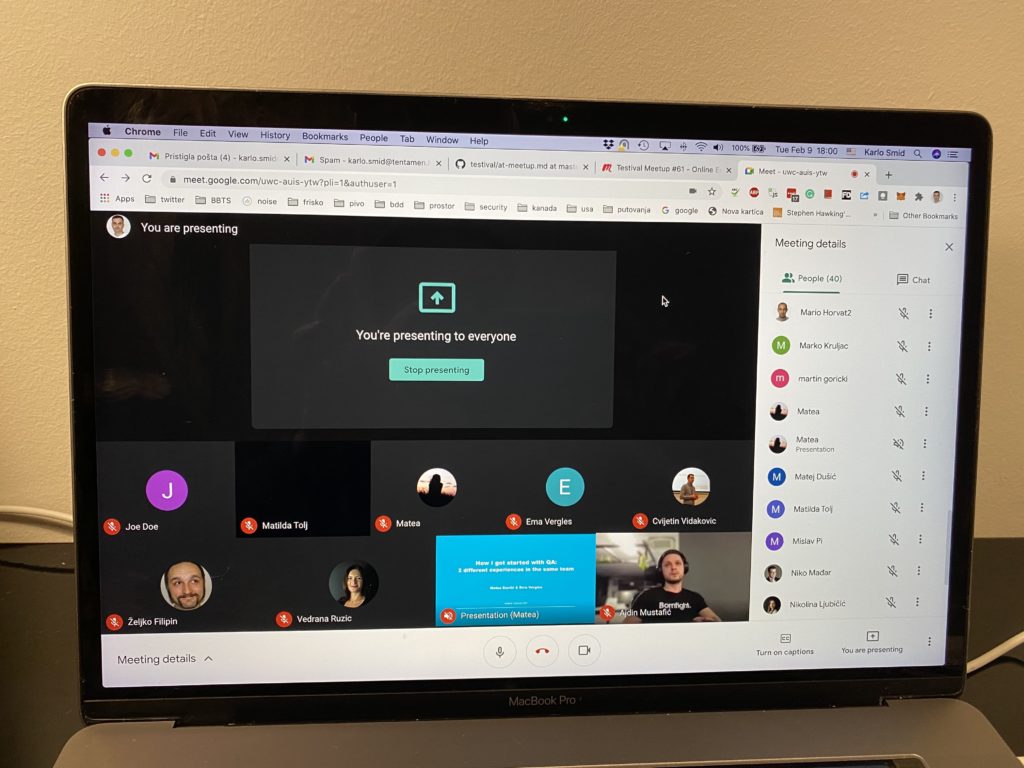
TL;DR
Yesterday was the time for Testival #61 Meetup, our third online edition. Here is what I learned.
The concept was as usual. This time we had two talks and two lightning talks.
Matea Đonlić & Ema Vergles, Lemax How is it like to start a QA career after getting a Ph.D. in Computer Science and working in academia [source]?
[Note] This section was updated because I noted wrong information about Ema and Matea’s statements. The wrong information is now crossed out.
Matea and Ema presented their early experience as software testers in Lemax. What was interesting was that Matea and Ema have different backgrounds. Matea finished FER with Ph.D., and Ema was a project manager. So Ema’s stronger side was knowing Lemax domain, and Matea was stronger on technical aspects of Lemax products. And they both choose to be QA in Lemax. Lemax business is the automation of tour operator’s processes. Matea was surprised by the level of tour operators’ business tools. Spreadsheets were the most common.
In Lemax, Ema and Mate belong to two teams, QA and Scrum team.
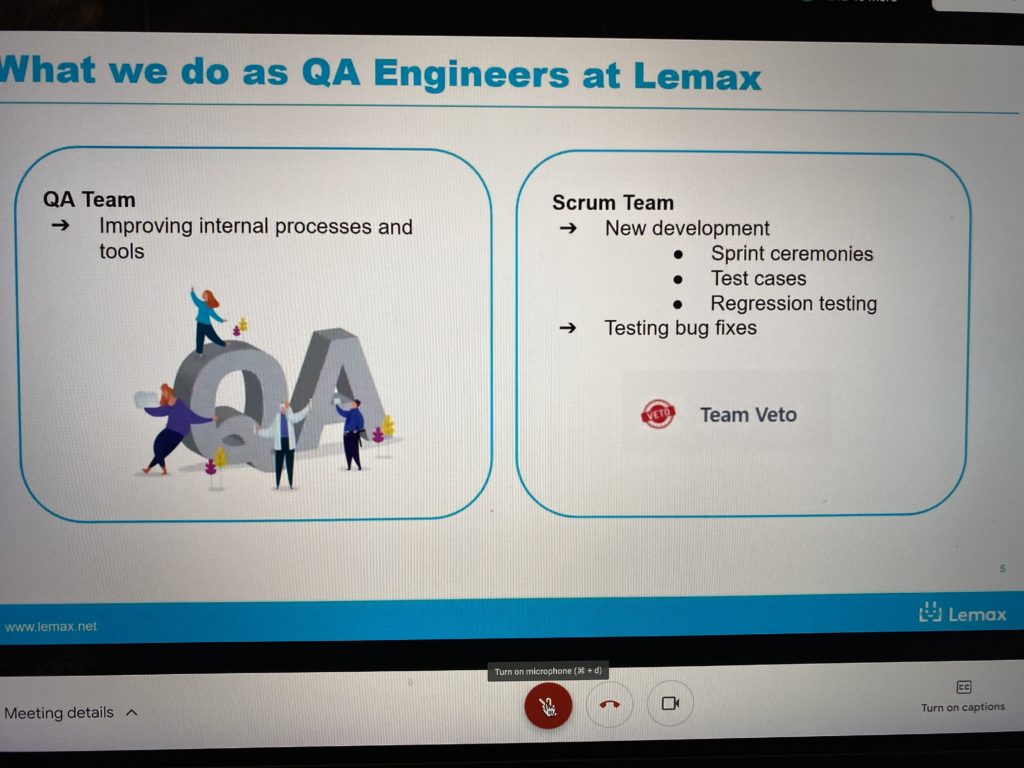
Matea’s We all know that the recent impression of QA was that this is something like monkey testing, pressing buttons and links without any order until you found an issue. But things are changing for the better. At the job interview, Matea used a creative technique, a two-way talk. By asking questions, she interviewed Lemax about what it’s like to be QA there. What I like is that Lemax could explain their current QA process. Interview tip that you should consider such company for employment.
Ema started as a part-time freelancer QA because she also had her side project. As she worked as Lemax project manager, she already knew the system. She helped Matea bootstrap the Lemax domain, and Matea developers helped her bootstrapping technical aspects of QA (for example, REST API).
Conclusion
In the end, Ema and Matea both agreed on what they like in Lemax:
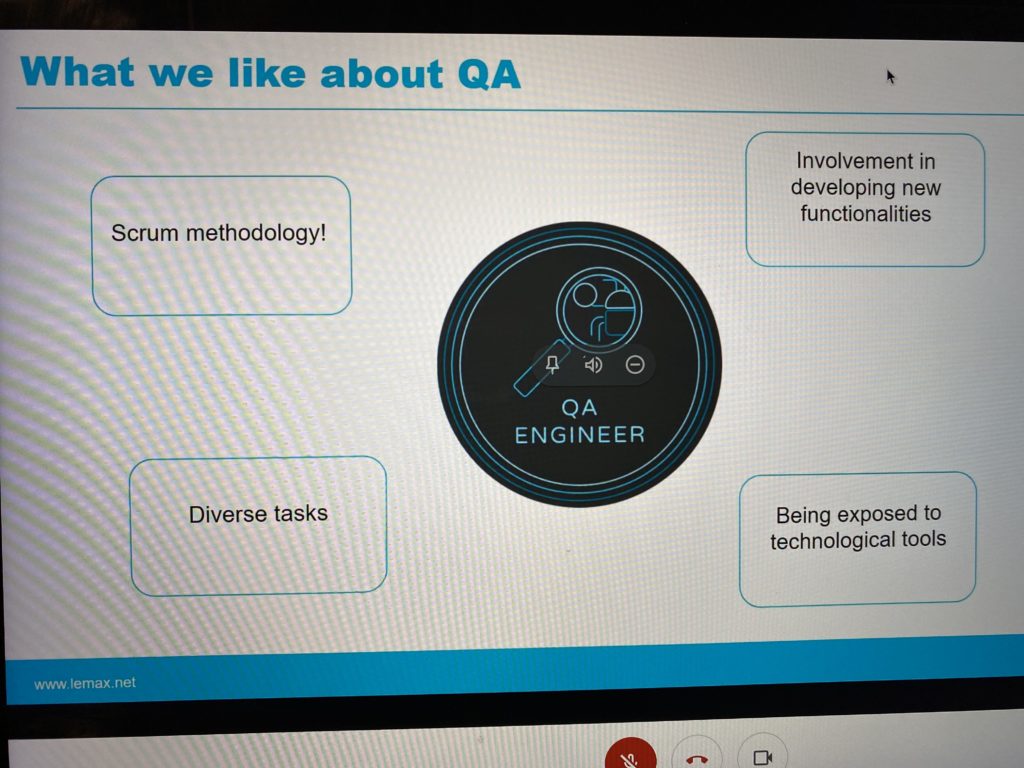
Lemax is hiring; you can find out more information at their site.
Cvijetin Vidakovic, FIVE. You are still doing the UI testing checks manually, and you would like to change it [source]?
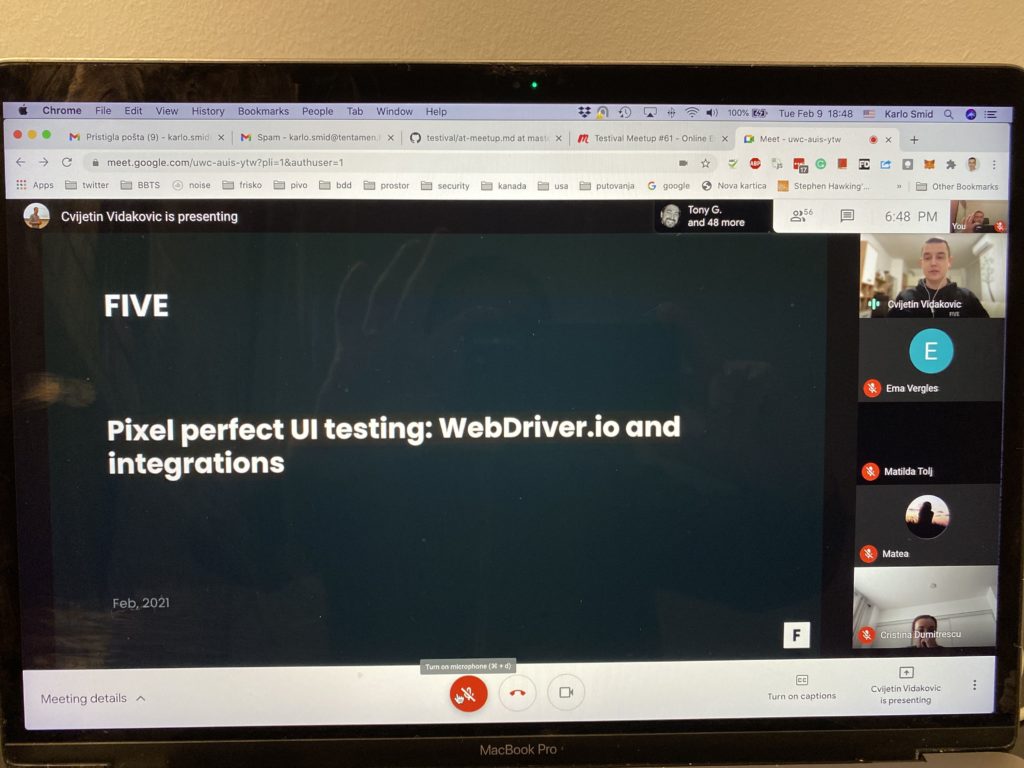
Cvijetin nicely summarized his story of how to effectively bootstrap UI Automatization testing. In FIVE, his first assignment was to check the production deploys for the application 57 hours.
The Context
His task was to check does each of the site articles is still displayed ok on the mobile device. There were around 200 articles to review. After several iterations of manual checking, he decided to propose to implement automation for this task. After some investigation, he chose the following tools:
- webdriver.io
- Browserstack
- percy.io
Here is his strategy. Using webdriver.io, he drives the browser to each article, browses through the article with taking screenshots of each view. The screenshot is automatically uploaded to Percy. No checks and verifications point because necessary checks are done in Percy’s dashboard. Each article has several baseline screenshots that need to be created/updated in Percy.
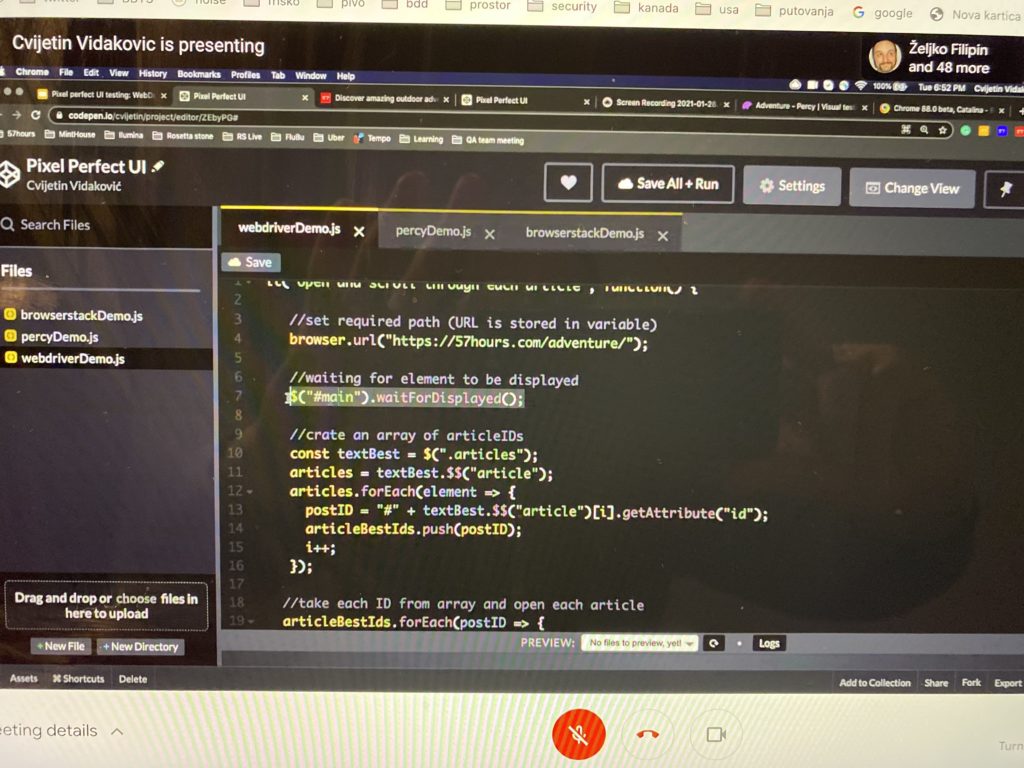
Then, in the percy.io dashboard, Cvijetin investigates reports with screenshot differences. His testing strategy is semi-automated because, in the end, he decides about Percy’s false positives.
Browserstack runs all the tests with OS/Browser/Resolution/Device combination.
macbookpro => Browserstack => Percy.io
Five is also hiring; check out their site for more info.
Lighting Talks.
I tried to explain what happened with Gamestop shares, and Zeljko presented his family Scratch game project. Please endorsed him for Scratch on LinkedIn; this is very important for his career direction.


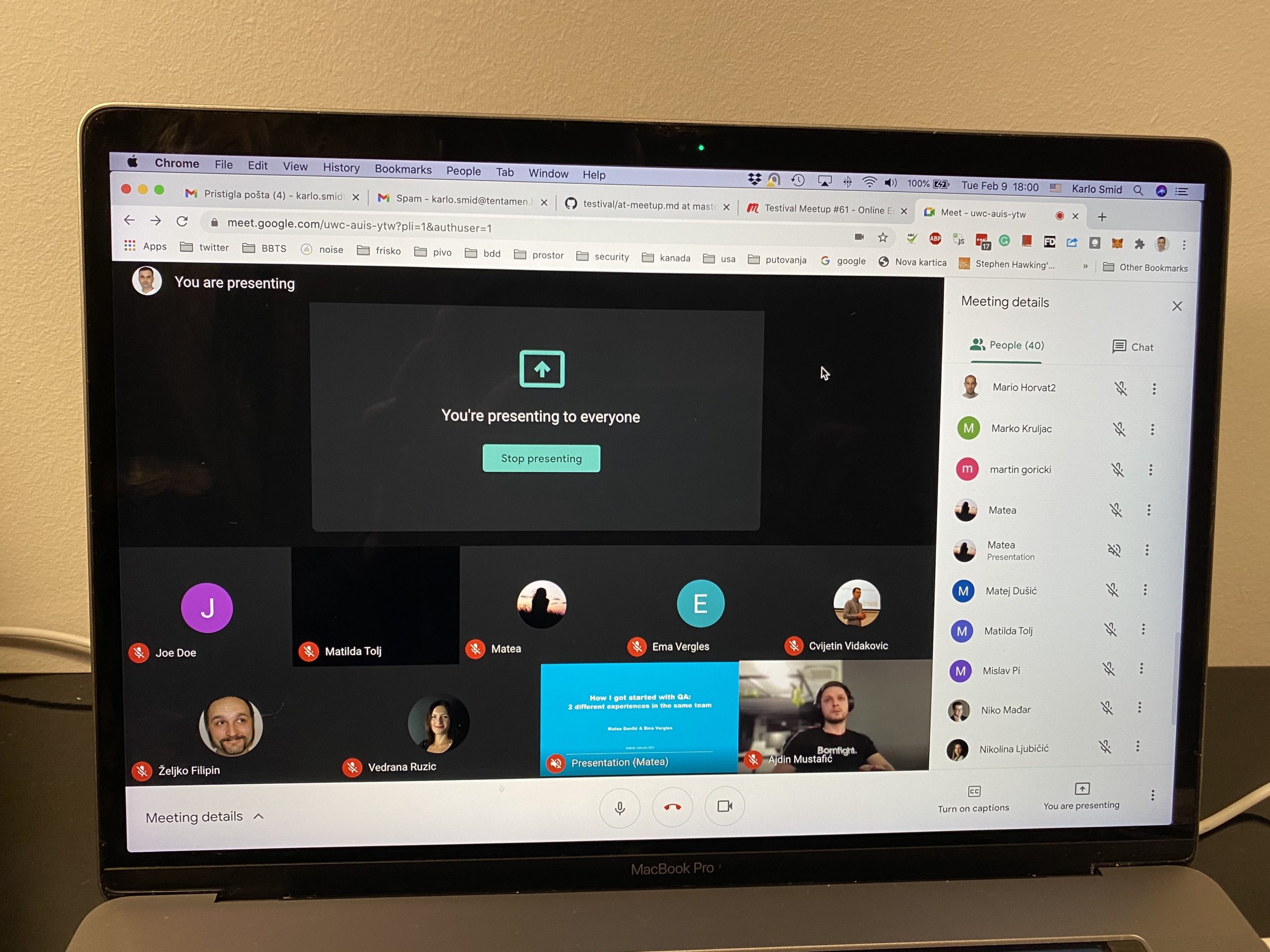

Comments are closed.